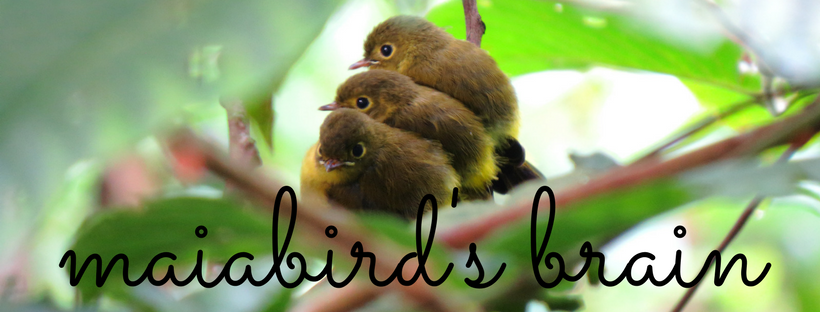I was hoping I'd see an owl before 2011 came to a close. I wasn't so lucky... it was a
python that closed the year for me! I didn't imagine I'd start 2012 with a family of owls for my lifers though!
It was the day before I left Cebu for the New Year when my birder friend Karen texted me that she had just seen an owl in their office compound in Quezon City. After a couple of text exchanges, she called me and we excitedly discussed her notes of the owl she saw using my Kennedy guide (she left hers in her house.) We had a suspicion it was a
Philippine Eagle Owl! She said she would go back the following day and get a photo of it. While I was in Cebu, I got another excited text from her: it was indeed a Philippine Eagle Owl! With a couple more days before I flew home to Manila, I had to sit and wait for my chance to see my first owl.
 |
| Here are Karen's notes of the owl. |
Same day as I got back, Jops and I met up with fellow birders Jun, Yana, Abby, Mark Jason V. and Mark Jason A. to join Karen to spot the owl. As we left our meeting place, the dark clouds started rolling in above us. I bet we all said silent prayers for the weather to cooperate and not rain on our owling trip.
We picked up Karen and drove to the site. I was amazed that this owl chose a tree just above a quite busy street inside the compound. Lots of human and vehicular traffic going on under its high perch! As soon as we drove past the tree, Karen saw it already perched. We quickly parked, disembarked and marched to a good spot to see this "uncommon, poorly known" owl species (according to the Kennedy guide.)
And there it was: my first owl!
My first lifer for 2012! (Pardon the dark digi-binned photos =) )
I jotted down my field notes, staring at every inch of this gorgeous bird staring down at our party. The streaking on its whitish chest and body was so beautiful! Its ear tufts sticking out the top of its head making it look serious and angry and its huge yellow eyes gave piercing stares at us and other passersby. I didn't want to leave! And apparently so did everyone in our group!
 |
| Even the owl's droppings were documented =P |
So we stayed until dark and saw the owl fly further up the tree. That brief aerial display gave us so much excitement, we weren't prepared for what we were about to see next. After staying for a short while on its new perch, it flew further away towards a nearby building and perched on a ledge. We all exclaimed "Dalawa sila!!!" ("There are two of them!!!") There, waiting on the ledge was another owl! Much smaller and with a darker, less streaked chest and body. They sat together for a while as dusk crept in. The bigger owl then returned to the tree, on a higher perch.
At some point, Jops jokingly exclaimed "Uy, tatlo na sila!!!" ("There are three of them!!!") where we all just laughed at the idea. It would be great to have more owls come in but what were the odds, right? Well, we were all in for another surprise. As we all faced the owls on the building, a huge form flew above us! A third owl!!!
This one was even bigger than the first owl we saw! It perched on the ledge but almost immediately flew and transferred to the tree to sit snugly beside the first owl! They even seemed to "kiss" as the bigger one landed. They sat side by side for a few minutes before, one by one, they flew in opposite directions into the night.
 |
| Sadly, I wasn't able to get a shot of the two owls sitting side by side on this very perch. |
We stayed awhile, looking at the smaller (possibly immature Philippine Eagle Owl) still perched on the ledge, sometimes walking from one side to the other. When it was too dark and there was no sign of the two adult birds, we decided to leave. Of course, we all had dinner to celebrate our fantastic encounter with the family of owls!
More photos here Mark Jason Villa Goes Birding
























